Introduction. There have been changes throughout the entire 2023 NEC that may affect the installation of photovoltaic (PV) systems. However, this article will concentrate on the changes in Article 690, Solar Photovoltaic (PV) Systems, Article 705, Interconnected Power Production Sources, Article 691, Large-Scale Photovoltaic (PV) Electric Supply Stations, and Article 710, Stand-Alone Systems, that more directly affect PV systems. These articles are under the purview of Code-Making Panel No. 4, chaired by James J. Rogers.
Climate change is resulting in more frequent weather events, including high winds and rain, tornadoes, hurricanes, flooding, heavy snowfall, and forest fires, resulting in increased numbers of people who have experienced short or long electrical utility outages. This situation is increasing the demand for PV systems that have an energy storage component providing electrical energy during these utility outages. For this reason, changes to Articles 480, Stationary Standby Batteries, and Article 706, Energy Storage Systems, both under the purview of CMP 13 (chaired by Linda J. Little) will also be addressed.
Unfortunately, the definition of Stationary Standby Batteries as batteries remaining in a float charge or near 100 percent state of charge awaiting a discharge event also appears to be applicable to energy storage system batteries. Most PV systems with energy storage systems are utility-interactive, and the batteries remain in the fully charged state until there is a utility outage, sometimes at infrequent intervals or never. The two articles may overlap and be applied in a single system. Here is an example.
A dwelling has a sizable PV system (7 kW AC output) consisting of utility interactive micro-inverters and a string inverter. See photo 1. This PV system AC output feeds all AC circuits in the house, which are also connected to the protected loads AC input/output of a multi-mode utility-interactive inverter. In addition to being connected to the utility service, the multi-mode inverter is also connected to a bank of valve-regulated lead acid batteries (VRLA) rated at 600 kWh. The multi-mode inverter controls the battery charge and discharge processes and the interface with the utility. All the inverters and other equipment except for the batteries are listed under the appropriate Underwriters Laboratory standards. This is not listed energy storage system as covered by Article 706. However, the battery bank meets the requirements of Article 480 and is exempt from the listing requirement because it is installed in a dwelling. But Article 706 covers the various interconnection requirements of the components in the system, and it can be used in conjunction with Article 480 to design, install, and inspect the system.
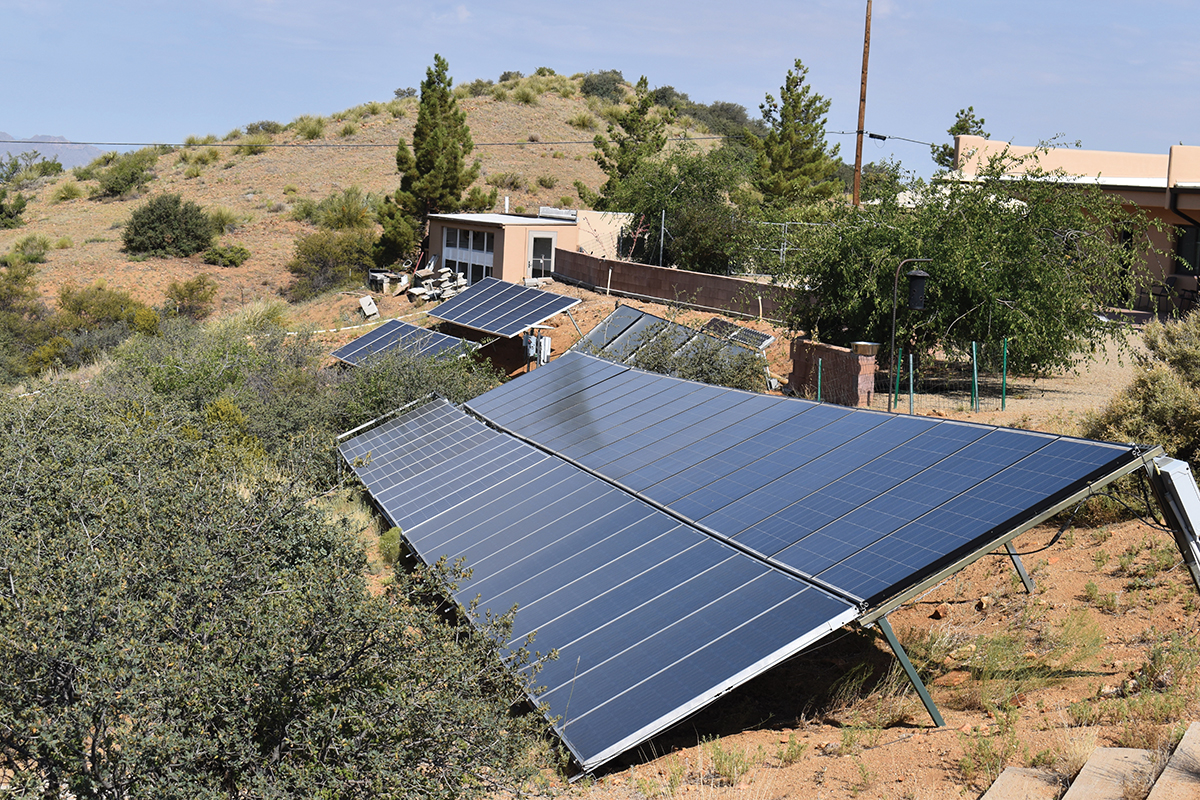
Sections that remain essentially unchanged from the 2020 NEC will not be addressed.
The text of the 2023 NEC changes will not be fully addressed because of the limitations on the length of this article. The full text of the 2023 NEC is available for viewing on the NFPA website at NFPA.org
ARTICLE 690, Solar Photovoltaic (PV) Systems
Section 690.1, Scope. Informational Notes, Figures 690.1(a) and (b) have been combined into one figure Informational Note, Figure 690.1. This revision adds some clarity by eliminating the interconnections to energy storage systems and showing only the DC PV circuits.
The Definitions in Section 690.2 have all been moved to Article 100, where all the definitions throughout the code will be found.
Section 690.4(B), General Requirements. Additional equipment and acronyms have been added to the list of equipment that must be listed or have a field inspection label applied.
Section 690.4(G), PV Equipment Floating on Bodies of Water. This new section dealing with equipment floating on bodies of water has been added. The section adds additional requirements over those requirements for fixed, land-based PV installations.
Section 690.7, Maximum Voltage, has been broken down into subparagraphs for additional clarity.
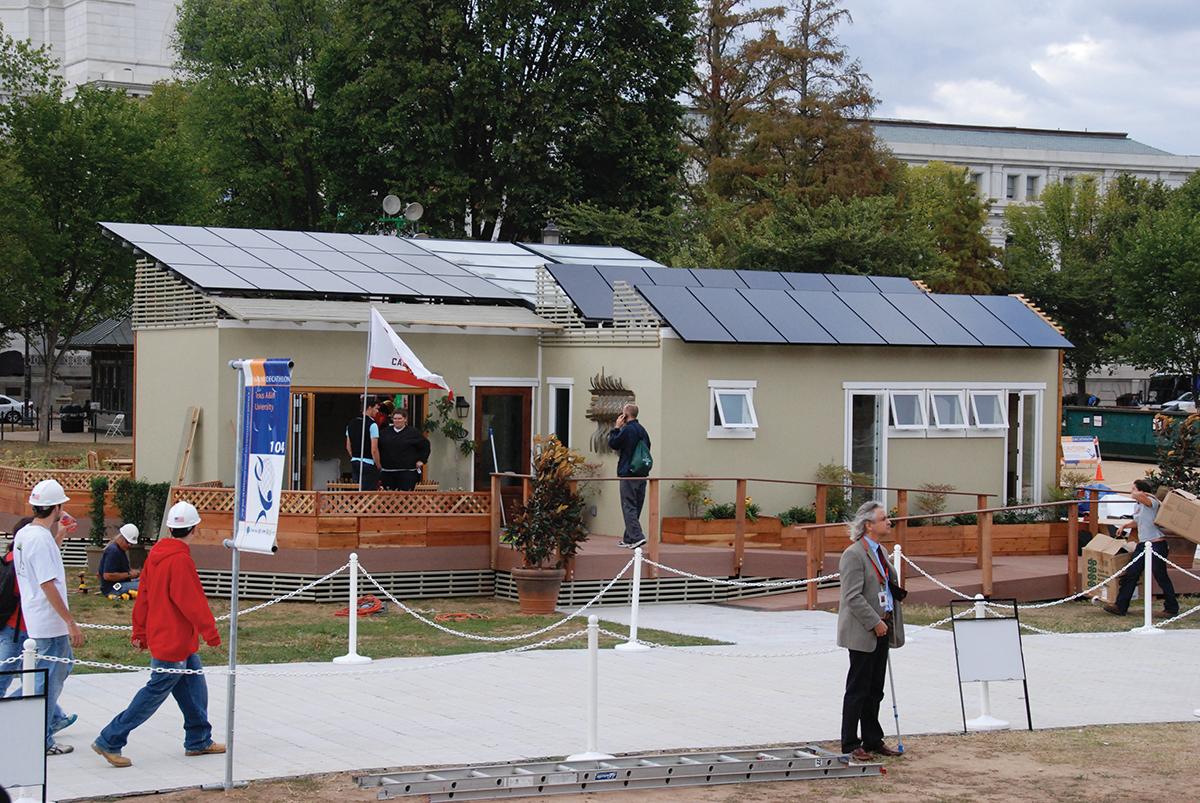
Section 690.7(D), Marking DC PV Circuits, has been added dealing with the marking requirements for DC PV circuits. The highest maximum DC voltage in the system must be provided by the installer in one of three listed locations.
Section 690.8(1)(b), Photovoltaic Output Circuit Currents, has been eliminated and the subsequent paragraphs renumbered with some combining of requirements. An Informational Note has been added to indicate that modules that can produce electricity when exposed to light on multiple surfaces are labeled with additional information.
Section 690.8(D), Sizing of Module Interconnection Conductors, has had the name changed to Multiple PV String Circuits and has been divided into subparagraphs for additional clarity.
Section 690.9(C), Source and Output Circuits, has had a name change and is now called PV System DC Circuits. The contents remain the same.
Section 690.9(D), Power Transformers, has had the name changed to Transformers and the current text has been shortened and points to the requirement in Section 705.30 (F). The Exception remains the same.
Section 690.10, Stand-Alone Systems, has been removed, and the requirements are now included in Section 710.15.
The Exception in Section 690.11, Arc-Fault Circuit Protection (dc), has been revised for clarity with subparagraphs.
In Section 690.12, Rapid Shutdown of PV Systems on Buildings, Exception Number 2 has been added dealing with non-enclosed detached structures not requiring rapid shutdown systems.
Section 690.12(A), Controlled Conductors, has a new Exception dealing with arrays not attached to buildings that terminate on the exterior buildings and PV system circuits installed in accordance with 230.6. These circuits are excepted from the rapid shutdown requirement.
Section 690.12(B), Controlled Limits, has an additional sentence that says that equipment and systems shall be permitted to meet the requirements both inside and outside the array as defined by the manufacturer’s instructions, including in the listing.
Section 690.12(B)(1), Outside the Array Boundary, has had a few words added to further define the installation of a PV Hazard Control System (PVHCS).
Section 690.12(B)(2), Inside the Array Boundary, has been revised for clarity, and an Informational Note No. 2 has been added following the section.
Section 690.12(C), Initiation Device, has been slightly reworded for clarity, and the Informational Note has been deleted after subparagraph (3).
The contents of Section 690.12(D), Equipment, have been removed and replaced with marking requirements previously found in Section 690.56(C) and retain the title of that section, Buildings with Rapid Shutdown. The requirements for marking and been slightly changed, and the Informational Note now refers to Figure 690.12(D).
The Informational Note for Figure 690.12(D), has now been transferred from its previous location in Section 690.56 (C) to this location.
Section 690.12(D)(1), Buildings with More Than One Rapid Shutdown Type, has been added and was previously Section 690.56(C)(1).
Section 690.12(D)(2), Rapid Shutdown Switch, has been added and was previously 690.56(C)(2).
In Part III. Disconnecting Means, Section 690.13 has had (A) Location, broken down into two subparagraphs, (1) Readily Accessible and (2) Enclosures and Doors and Covers. This is essentially a rewrite of the existing requirement that was found in one paragraph.
Section 690.15(A), Location, has been replaced with a new section entitled Type of Disconnecting Means, which has three subparagraphs elaborating on the types of disconnecting means.
Section 690.15(C), Equipment Disconnecting Means, has been revised into four subparagraphs essentially containing the same contents as the previous single paragraph.
Section 690.15(D) is now called Location and Control. It is revised and expanded the previous requirements into four subparagraphs providing additional details.
Significant revisions have been made in Part IV, Wiring Methods and Materials.
Section 690.31(A), Wiring Methods, now includes four subsections, (1) Serviceability, (2) Where Readily Accessible, (3) Conductor Ampacity, and (4) Special Equipment.
Table 690.31(A)(B) is now renumbered as Table 690.31(A)(3)(1).
Section 690.31(B), Identification and Grouping, has been revised and expanded to three subsections, (1) Conductors of Different Systems, (2) Identification, and (3) Grouping. The changes include additional material and better clarity.
Section 690.31(C)(1), Single Conductor Cable, has been revised and expanded with additional requirements into three subparagraphs.
Section 690.31(C)(2), Cable Tray, has been expanded to include three subparagraphs dealing with single conductor PV wires smaller than 1/0 AWG.
Section 690.31(D), Direct-Current Circuits on or in Buildings, has been revised and changed. The previous subparagraph (1) concerning flexible wiring methods has been removed. Subsection (1) is entitled and now addresses Metal Raceways and Enclosures and Subsection (2) Marking and Labeling contains the same material as the previous edition of the code.
A new Section 690.31(G), Over 1000 V DC, has been added and has three subparagraphs.
Part V. Grounding and Bonding.
Section 690.41(A), PV System Grounding Configuration, has minor rewording for clarity.
Section 690.42, Point of System Grounding Connection, has been retitled Point of PV System DC Circuit Ground in Connection and has been slightly expanded with two subsections, (A) Circuits with GFDI Protection and (B) Solidly Grounded Circuits.
Section 690.43(A), Photovoltaic Module Mounting Systems and Devices, has been slightly shortened and added an Informational Note.
The title of Section 690.43(C), With Circuit Conductors, has been changed to Location. An additional sentence adds clarity.
In the first sentence of Section 690.47(A), Buildings or Structures Supporting a PV System, the reference has been changed to 690.40(B) instead of Part III of Article 250.
Part VI. Source Connections. This part was previously entitled Marking.
The sections related to PV Rapid Shutdown in this part have been moved to 690.12.
There are three sections in this part now. Section 690.56, Identification of Power Sources, refers to the requirements in article 705.10. Section 690.59, Connection to Other Sources, refers to the requirements in Parts I and II of Article 705. The contents of Section 690.72, Self-Regulated PV Charge Control, have not been changed.
Article 691 Large-Scale Photovoltaic (PV) Electric Supply Stations. See photo 3.
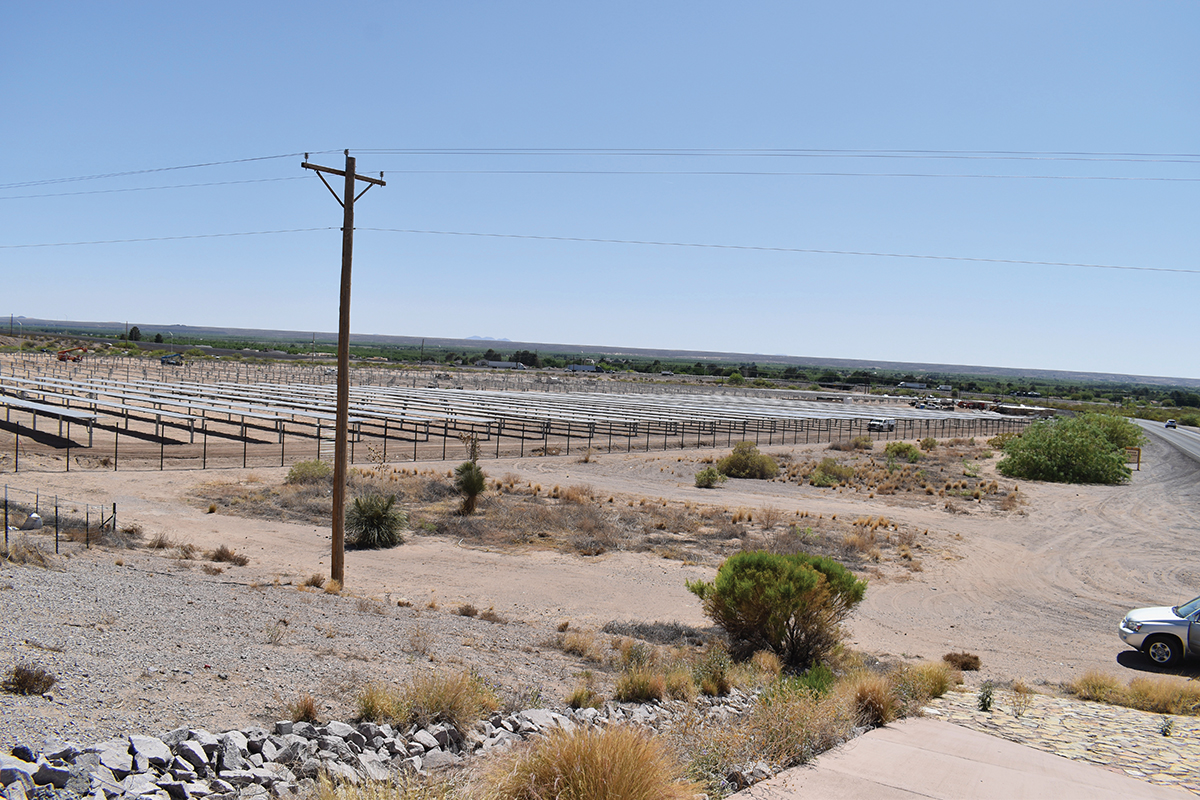
691.1 Scope. Informational Note No. 1 now has a reference to Section 691.4.
The Definitions in 691.2 been moved to Article 100.
691.4 Special Requirements for Large-Scale PV Electric Supply Stations. Two new subparagraphs been added to the section and an Informational Note No. 2 addresses minimum size requirements.
Section 691.9, Disconnecting Means for Isolating Photovoltaic Equipment. The Informational Note has an updated reference to NFPA 70E-2021 and the reference to NFPA 70 E-2018 has been deleted.
Section 691.10, Fire Mitigation. This title has replaced the previous title Arc-Fault Mitigation and an Informational Note has been added.
ARTICLE 705 Interconnected Electric Power Production Sources.
See photo 4.
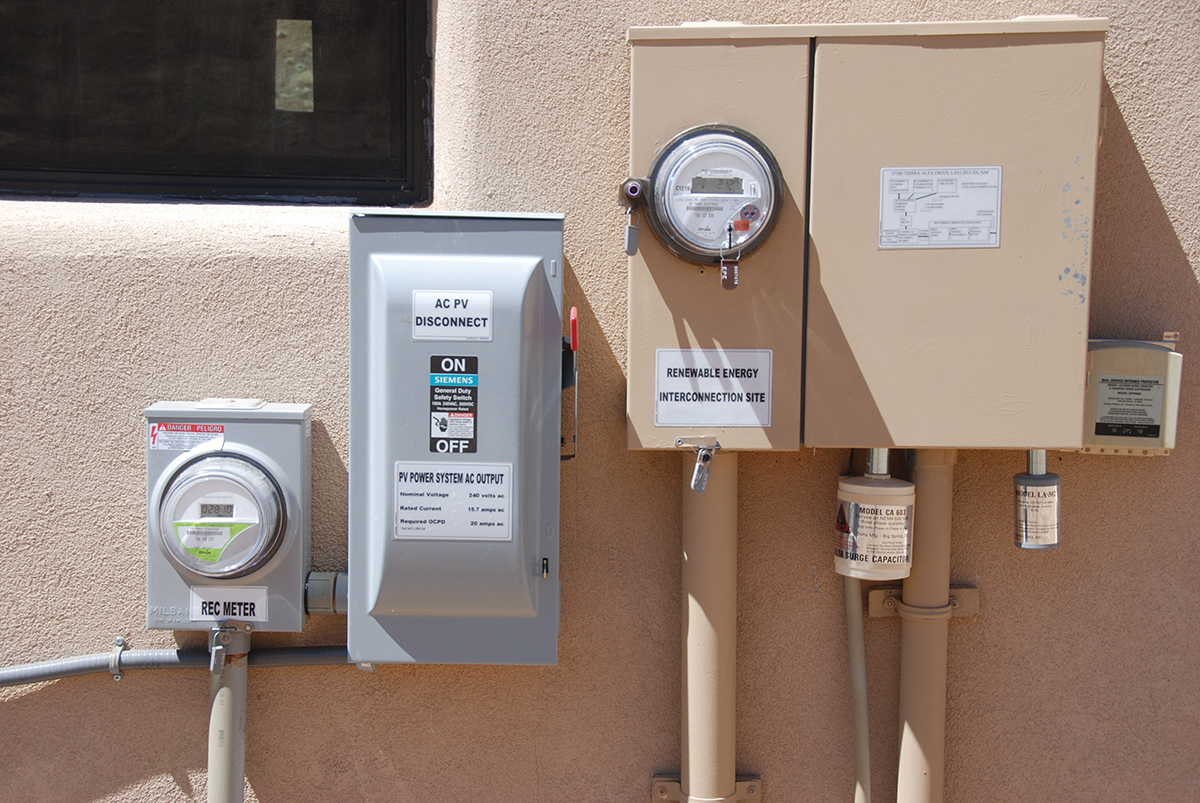
Section 705.1, Scope. A second Informational Note has been added to this section.
The Definitions in Section 705.2 have been moved to Article 100.
A new Section 705.5, Parallel Operation, has been added with two subsections: (A) Output Compatibility, and (B) Synchronous Generators. Subsection B has an Informational Note referring to IEEE 1547 and UL 1741.
Section 705.6, Equipment Approval, has been revised and two Informational Notes have been added.
Section 705.10, Identification of Power Sources, has been restructured and expanded for clarity with additional requirements.
Section 705.11 has been re-titled to Supply-Side Source Connections.
Section 705.11(A) has been completely rewritten and now is entitled Service Connections and now has three subsections.
Section 705.11(B), Conductors, has been expanded and now has three subsections.
Section 705.11(C), previously titled Overcurrent Protection, has been changed to Connections [previously 705.11( D)] and significantly expanded with three subparagraphs: (1) Splices or Taps, (2) Existing Equipment and, (3) Utility-Controlled Equipment.
Section 705.11(D) is now Service Disconnecting Means with new content.
Section 705.11(E) is now Bonding and Grounding with new requirements.
Section 705.11(F) is now Overcurrent Protection and has been significantly reduced in size from the previous edition of the code by referring to Article 230 requirements.
Section 705.12, Load Side Source Connections, has been significantly revised with modified requirements by combining requirements into only two large subsections, (A) Feeders and Feeder Taps, (B) Busbars.
Section 705.13 has been retitled Energy Management Systems (EMS) with reduced requirements from the previously titled Power Control Systems.
Section 705.20, Source Disconnecting Means, has modified and added requirements.
Section 705.25, Wiring Methods, has some wording changes and minor additions for clarity. An Informational Note has been added.
Section 705.28, Circuit Sizing in Current, has been revised with additional material related to Energy Management System (EMS) with multiple subsections in the Power Source Output Maximum Current Section (A) and several exceptions in the Conductor Ampacity Section (B).
Section 705.30, Overcurrent Protection. This section has been extensively revised and expanded and now includes subsections (A) through (F).
Section 705.32, Ground-Fault Detection, has a few words added in the text and in the Exception for clarity.
Part II. Microgrid Systems
Section 705.50, System Operation, has a few words added for clarity and two Informational Notes have been added.
Section 705.70, Microgrid Interconnect Devices (MID), has subparagraph (3) modified for additional clarity.
Section 705.76, Microgrid Control System (MCS), is a new section dealing with the subject equipment in four subparagraphs and an Informational Note.
Part III. Interconnected Systems Operating in Island Mode.
This is a new part.
Section 705.80, Power Source Capacity. This new section is a single paragraph dealing with the sum of all power source outputs.
Section 705.81, Voltage and Frequency Control. This new section is a single paragraph requiring island mode sources to be compatible with connected loads.
Section 705.82 Single 120-Volt Supply. This new section contains information and warnings about overloading neutrals on three wire circuits supplied by 120 V sources.
ARTICLE 710 Stand-Alone Systems
See photo 5.
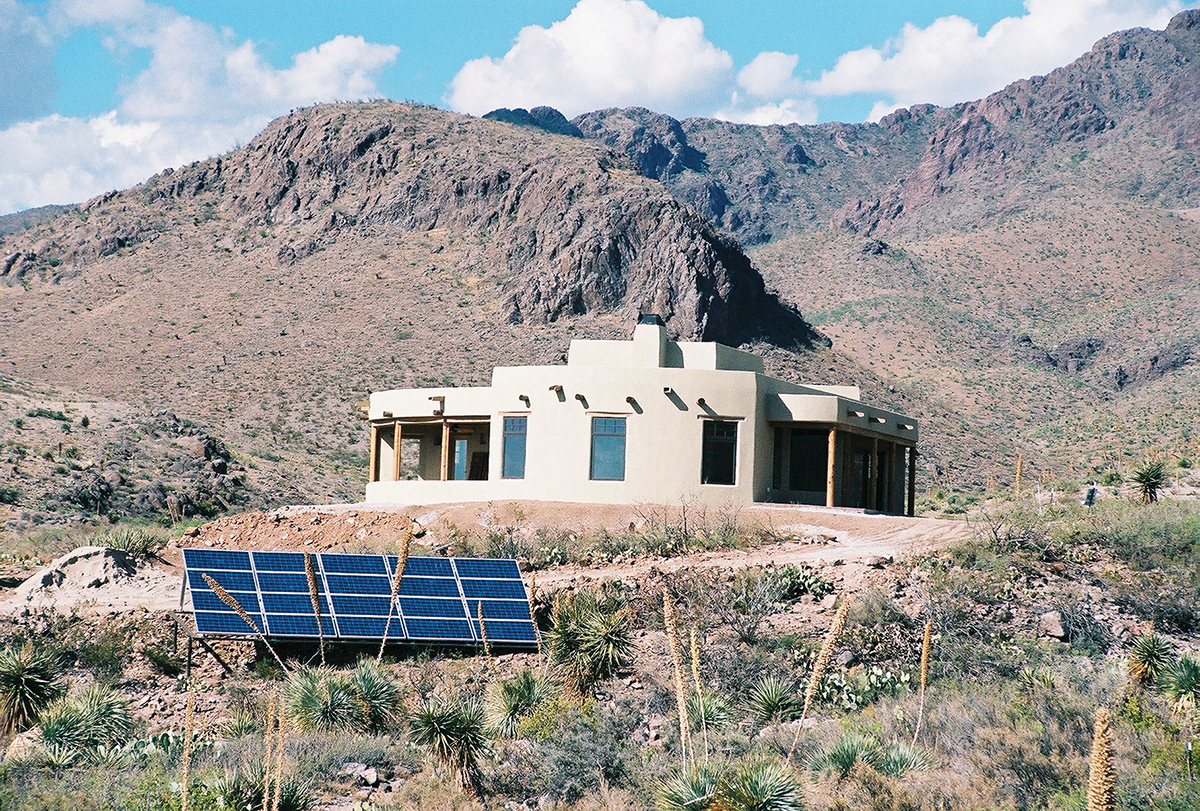
Section 710.6, Equipment Approval, has had a few slight modifications for clarity and Informational Note has been deleted.
Section 710.10, Identification of Power Sources. This section has had a few modifications for clarity and the Exception has been deleted.
Section 710.10(F), Back-fed Circuit Breakers, has been deleted and replaced with the previous 710.10(G), Voltage and Frequency Control.
ARTICLE 480, Stationary Standby Batteries.
See photo 6
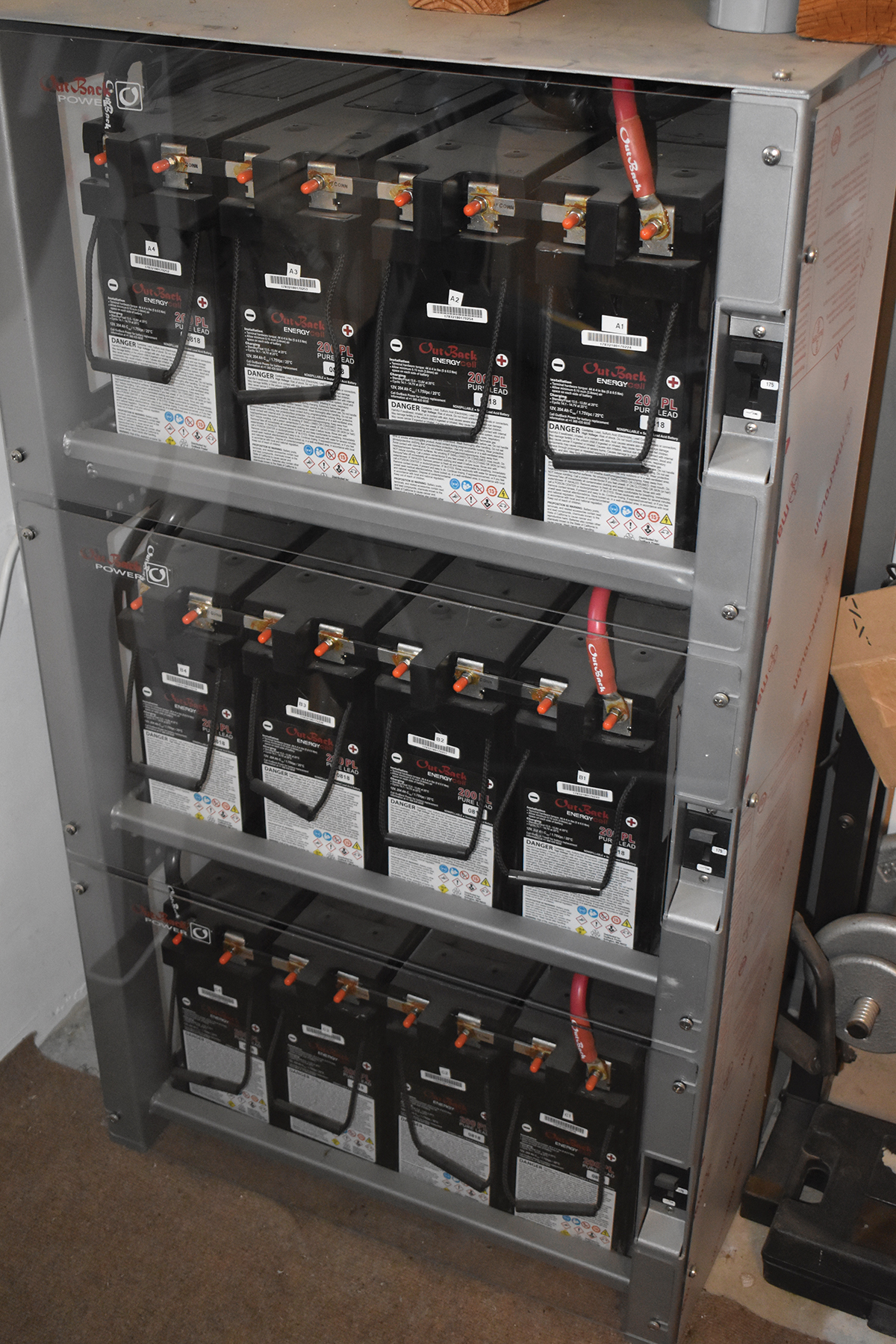
Section 480.1, Scope. The section now includes the minimum size of standby battery as 1 kWh. An additional Information Note now refers to Article 706, and the existing Informational Note has an additional reference.
Section 480.2, Definitions, has now been moved to Article 100.
Section 480.4(A), Corrosion Prevention. The Informational Note has now been merged into the text.
Section 480.7(A), Disconnecting Means, has a few words changed for clarity.
Section 480.7(G)(1), Facilities with Utility Services and Stationary Standby Batteries, as a slight wording change in the title and the removal of a reference to Section 712.10.
ARTICLE 706, Energy Storage Systems.
See photo 7.
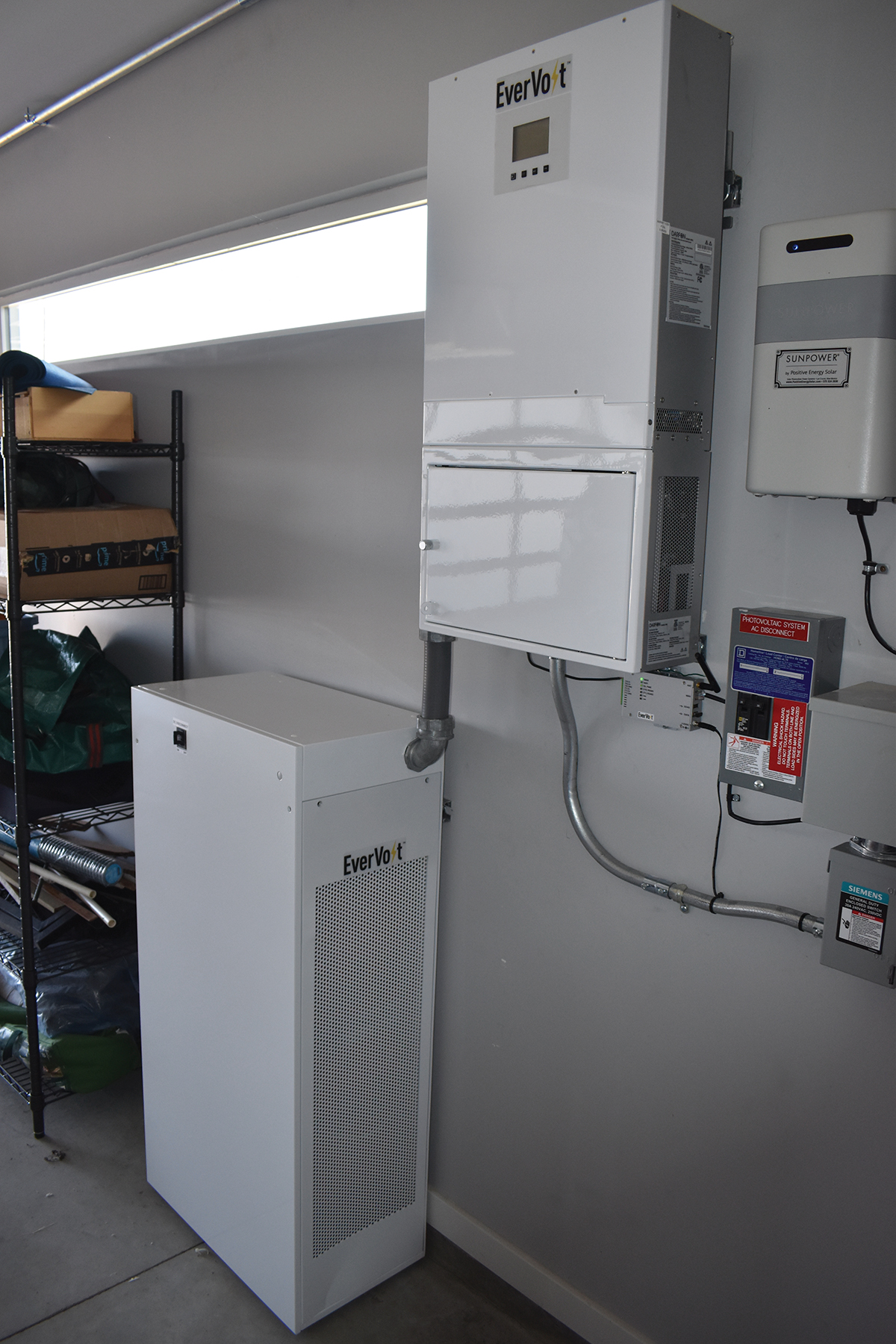
Section 706.1, Scope, has additional standards referenced Informational Note No. 3.
Section 706.2, Definitions, has been moved to Article 100.
Section 706.7, Commissioning and Maintenance, has been divided into two sub-sections entitled (A) Commissioning and (B) Maintenance. It is noted that commissioning does not apply to one- and two-family dwellings.
Section 706.8, Storage Batteries, has been removed from this article.
Section 706.15, Disconnecting Means, has been expanded significantly with increased content and requirements. Subsection titles have been revised and an additional Subsection E has been added with substantial content.
Section 706.20(A), Ventilation. Informational Notes in this section have been substantially revised.
Section 706.31(A), Circuits and Equipment. This section has received significant amounts of additional information and an Informational Note.
Section 706.31(B), Overcurrent Device Ampere Ratings, no longer has a reference to Article 240.
Section 706.40, General, has been slightly revised, and an Informational Note added.
Section 706.50, General, has been revised slightly for clarity.
Section 706.51, Flywheel ESS (FESS). This is a new section with four numbered paragraphs.





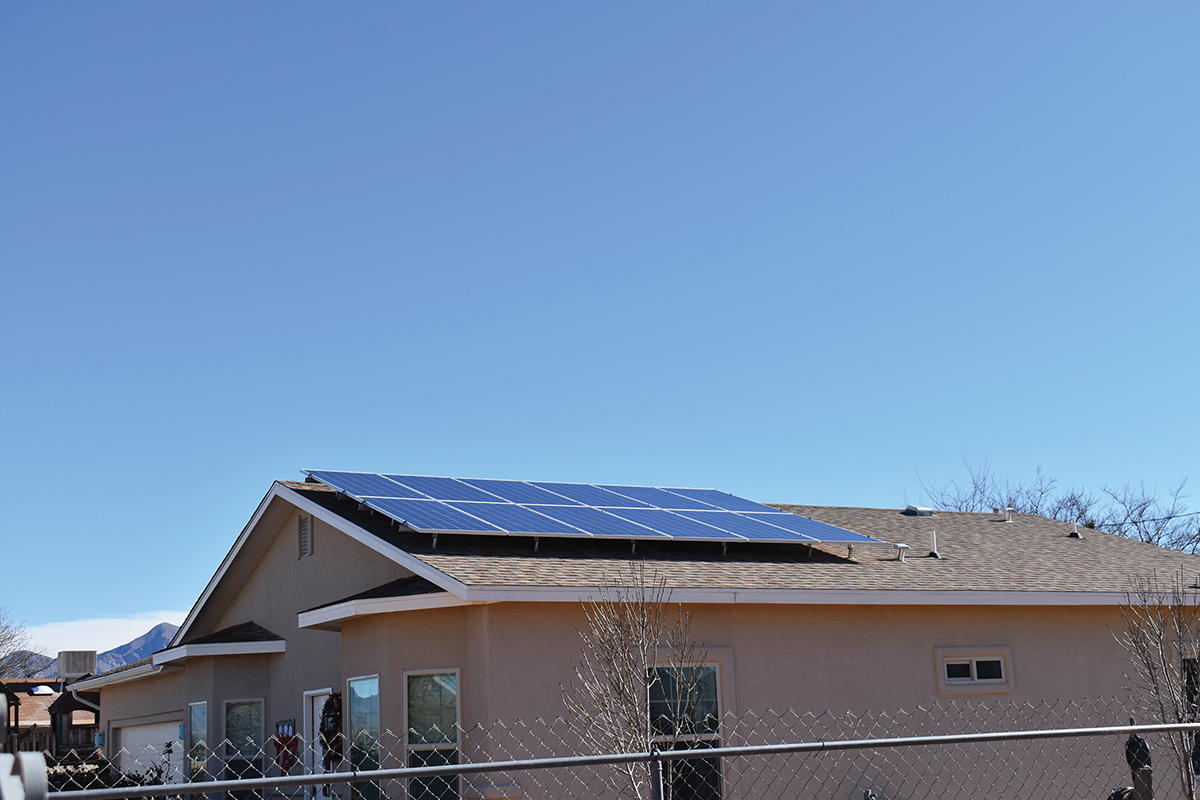









Find Us on Socials